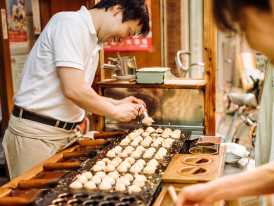
10 Must Try Japanese Foods You Might Not Have Heard Of
Edited by Elodi Troskie
Osaka is known as a “Kuidaore” city, which roughly translates to “ruining oneself by extravagantly indulging in food”. Food in Osaka is such a huge part of our culture that we’re also called “tenka no daidokoro”, meaning “the nation’s kitchen”. You get the picture: Osaka is the ultimate city for anyone who loves to eat. If you’re a fan of Japanese food, you might think you know a lot about Japanese cuisine, but there are so many traditional dishes and unusual Japanese food that haven’t quite made their way to Western countries yet. Our Osaka food specialities cover everything from weird Japanese candy which you’ll never have seen before to the more traditional food of Osaka which all Japanese people now love. So here are 10 must try Japanese foods in Osaka you probably haven’t heard of.
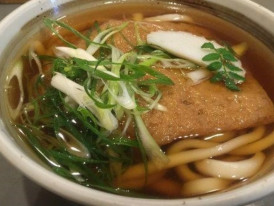
City Unscripted article image
Kitsune Udon
Kitsune Udon is a Japanese noodle soup in dashi broth, topped with seasoned fried tofu, narutomaki fish cake, and scallions. This hearty udon soup is one of the most popular classic noodle dishes. There are many theories speculating where this dish originated from, but it is most commonly believed that’s a food of Osaka. My restaurant recommendation to try this dish is Usamitei Matsubaya, an udon noodle shop in Osaka Minamisenba, the birthplace of the well-known and long-established store, Kitsune Udon, which was founded in 1893. Usamitei Matsubaya is open from 11:00 until 19:00 (19:30 over weekends) every day except Sundays.
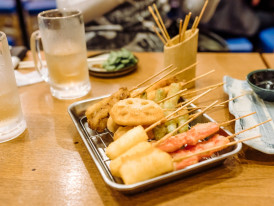
City Unscripted article image
Kushikatsu
Kushikatsu is a Japanese fast food that is easy to eat and won’t cost you too much - one of the great cheap eats in Osaka! This is a popular budget meal since it’s so filling. Originally, kushikatsu was considered junk street food that was aimed at ‘blue collar’ workers in the city. If this part of Osaka’s history interests you, go to Shinsekai, an old neighbourhood located next to the Minami area downtown. This area used to be called Doyagai and was known as the labourer district where flop houses were in abundance. A good place to try kushikatsu is at Kushikatsu Daruma Shinsekai sohonten. Another good option is Shinsekai Janjan Umeda, where you can enjoy a selection of other Japanese dishes like Osaka okonomiyaki, nabe pot, blowfish, and sashimi from their all-you-can-eat-and-drink menu.

City Unscripted article image
Motsunabe
Motsunabe, also known as offal pot, is a type of nabemono made from beef, pork or other offal. To cook motsunabe, a hot pot stew is made of various types of meat, vegetables – like cabbage and leek – and added to a soup, usually consisting of soy sauce with garlic, miso, and other spices. Champon noodles are sometimes added. Motsunabe is a popular dish that is fairly cheap to make. It has been eaten since ancient times in Japan and, although it is not that well-known in Western countries to which Japanese cuisine has expanded to, it is still commonly served in Japanese restaurants. Motsuhiko Shinsaibashi serves really good motsunabe, and it’s certainly something you should taste when you’re exploring the food in Osaka
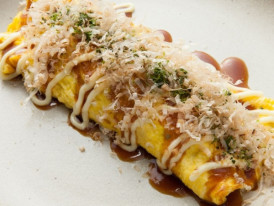
City Unscripted article image
Tonpeiyaki
Tonpeiyaki is an omelette filled with shredded cabbage and sliced pork, served with a sweet and savoury tonkatsu sauce, mayo and bonito flakes. Tonpeiyaki is closely related to okonomiyaki, a Japanese savoury pancake filled with various ingredients. Especially in Osaka, okonomiyaki is generally better known than tonpeiyaki, so it’s worth expanding your Japanese food horizons if you haven’t tried the latter. A good place to go for tonpeiyaki is Fukutaro Umeda, located in Grand Front Osaka. Fukutaro Umeda is open every day from 11:00 until 23:00, and visiting here will give you a real taste of the food of Osaka that locals really eat.
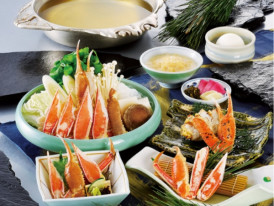
City Unscripted article image
Kanisuki
Kanisuki is a snow crab hot pot dish that is especially popular during winter. Because of the high prices of the snow crab, which can only be found in the deepest waters of the Japanese sea, this dish is quite the delicacy and an Osaka food speciality – not something you’ll eat every day. My restaurant recommendation for the best kanisuki in Osaka is a place called Kani Douraku. The first of these were opened in Osaka in 1962 but has evolved to a popular chain restaurant which can be found almost everywhere in Japan nowadays. Kani Douraku’s signature is an enormous moving crab in the shopfront. Despite the many branches of Kani Douraku there are across Japan, the one in Osaka is quite the hidden gem. This restaurant is more aimed on fine dining, making its atmosphere significantly unique to other branches.
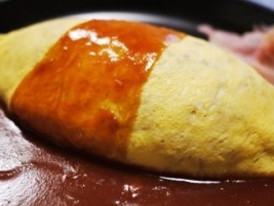
City Unscripted article image
Omu-rice
Omu-rice is one of the most popular yousyoku (Japanese-style Western food) dishes in Osaka. There is a very charming story about how this dish was created. According to the official website of Hokkyokusei, the first omu-rice restaurant in Japan, the dish was inspired by a regular customer who always ordered an egg omelette and white rice due to a stomach condition he suffered from. The owner decided to serve him something different for a change and cooked up a special dish of ketchup rice wrapped in thinly baked eggs. This is how omu-rice was born. It’s hardly an unusual Japanese food, but if you’re serious about authentic eats in Osaka, you should still try it. Hokkyokusei is open every day from 11:30 until 22:00.

City Unscripted article image
Takosen
Takosen is a Japanese street food dish consisting of takoyaki balls mashed inside a cracker. You can buy the cracker, tako-senbei, by itself anywhere in Osaka. Takosen also has an interesting origin story. In the 1970’s, private school tuition began to develop in Osaka. One of the biggest private schools in Kishiwada was surrounded by quite a lot of takoyaki shops. The children loved buying takoyoki, but the area’s residents complained about the takoyaki-containers the kids littered everywhere. One of the takoyoki shop owners saw the problem and started making edible containers – an idea that soon spread all over Osaka. The best place to get takosen in Osaka is at Kougaryu, located in Chuo Ward. Kougaryu was awarded a place in the Bib Gourmand section of the Michelin Guide in 2016, so if you’re looking for a Michelin star restaurant in Osaka this could be one to check out
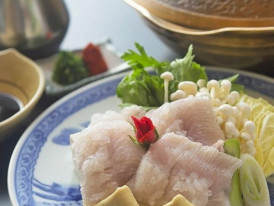
City Unscripted article image
Hamo
Hamo is a daggertooth pike conger fish dish that is especially common in Kyoto but has also become quite a popular food in Osaka. I’d recommend you go to Hamakyu to try this dish. This restaurant also serves really good blowfish thanks to their special technique for slicing and preparing it. This technique is called hone-kiri, which mean to cut bones. Blowfish need to be cut in a very specific way in order to get rid of both the bones and the poison. Because it requires master chef class skills to prepare, both hamo and blowfish is considered an exclusive dish and one of our Osaka food specialities, usually priced on the higher end. Nowadays, however, these dishes are more commonly available since there are more chefs who are skilled in cooking it, but I’d still urge you to save it for somewhat more of a fine dining experience.
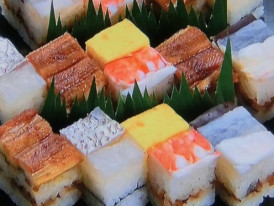
City Unscripted article image
Hakozushi
You may be familiar with sushi, but you might not have tasted or even heard of hakozushi, a slightly different style of sushi, also referred to as Osaka sushi, or Oshi-zushi. Hakozushi is a type of sushi made with shrimp, sliced fish and sumeshi (vinegary rice), layered and pressed into a wooden box. The name derives from “oshi”, which means “press”. Hakozushi has become a popular dish in the hospitality industry due to the beautiful collaboration of wooden box artisans and sushi chefs. Because it takes a long time to prepare it, the number of restaurants serving hakozushi has been declining in recent years. It is the traditional technique and flavour that has been passed down from generation to generation that makes this dish so unique, so don’t settle for it at any restaurant if you’re not convinced it has been prepared as it should. Daimaru in Shinsaibashi serves very good hakozushi.
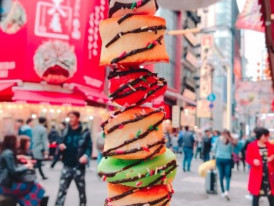
City Unscripted article image
Panbo
Panbo is a relatively new trend that has become popular among Instagram-foodies, so it’s still something of an unusual Japanese food. The concept is very typical of Osaka in the sense that it’s the sort of junk food – the type of thing you’d be walking and eating - street food in Osaka is a big part of the food culture. Panbo is basically miniature pancakes on a stick, varied with marshmallows and slices of fruit in between, which generally comes in two sixes with either three or five pancakes on the skewer. The sweet treat is finished off with sauces and toppings to your liking. Go to Osaka Kawaii Panbo for the best of its kind in the city. It looks so good you might not even want to bite into it, and it’s way better than any weird Japanese candy you can buy at a convenience store!

